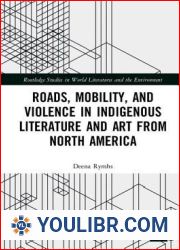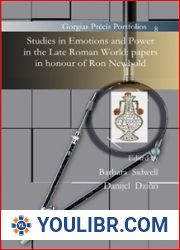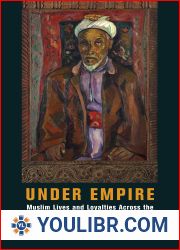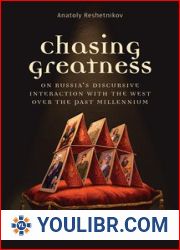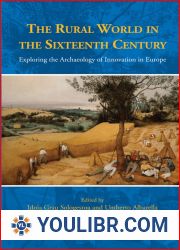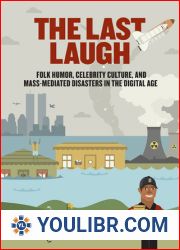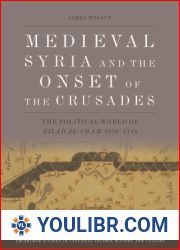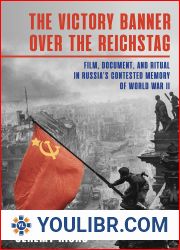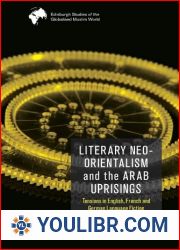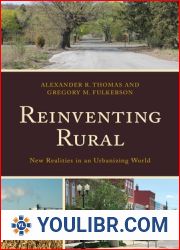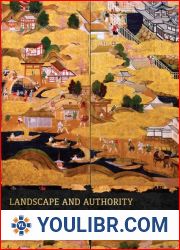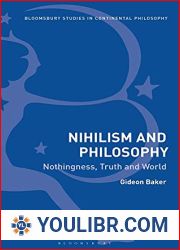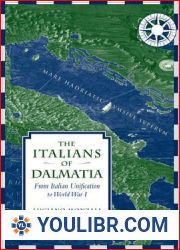
BOOKS - HISTORY - The World of the Slavs Studies of the East, West and South Slavs Ci...

The World of the Slavs Studies of the East, West and South Slavs Civitas, Oppidas, Villas and Archeological Evidence (7th to 11th Centuries AD)
Author: Editor in chief Sr?an Rudi?
Year: 2013
Format: PDF
File size: 13.4 MB
Language: ENG

Year: 2013
Format: PDF
File size: 13.4 MB
Language: ENG

The authors also tried to find out how these processes were reflected in archeology and written records. The World of the Slavs: Studies of the East, West, and South In the 7th to 11th centuries AD, the Slavic civilization flourished across vast territories of Europe, encompassing diverse cultures, histories, and social developments. This period saw the emergence of various Slavic tribes, each with their unique experiences, heritage, and ways of life. The complexity of these societies is reflected in the intricate organization of space within their territories, which was influenced by the confrontation or coexistence of different spatial layers. This study aims to provide an insight into some aspects of Slavic civilization during this era, focusing on cross-regional similarities and differences in the concepts of space amongst various Slavic tribes. The East Slavs: A Legacy of Urbanization The East Slavs, inhabiting the territories of present-day Russia, Ukraine, and Belarus, developed a complex urbanization process, with cities like Kiev, Novgorod, and Vladimir serving as centers of power and culture. These cities played a crucial role in shaping the social, economic, and political landscape of the region.
Авторы также попытались выяснить, как эти процессы отразились в археологии и письменных записях. Мир славян: исследования Востока, Запада и Юга В VII-XI веках нашей эры славянская цивилизация процветала на обширных территориях Европы, охватывая различные культуры, истории и социальные события. В этот период появились различные славянские племена, каждое со своим уникальным опытом, наследием и образом жизни. Сложность этих обществ отражается в запутанной организации пространства внутри их территорий, на которую повлияло противостояние или сосуществование разных пространственных слоев. Цель этого исследования - дать представление о некоторых аспектах славянской цивилизации в эту эпоху, сосредоточив внимание на межрегиональных сходствах и различиях в концепциях пространства среди различных славянских племен. Восточные славяне: наследие урбанизации Восточные славяне, населяющие территории нынешней России, Украины и Белоруссии, развили сложный процесс урбанизации, в котором центрами власти и культуры являются такие города, как Киев, Новгород и Владимир. Эти города сыграли решающую роль в формировании социального, экономического и политического ландшафта региона.
s auteurs ont également essayé de comprendre comment ces processus ont été reflétés dans l'archéologie et les documents écrits. monde des Slaves : exploration de l'Est, de l'Ouest et du Sud Au VIIe-XIe siècle après JC, la civilisation slave a prospéré sur de vastes territoires européens, englobant diverses cultures, histoires et événements sociaux. Au cours de cette période, différentes tribus slaves sont apparues, chacune avec sa propre expérience, son héritage et son mode de vie. La complexité de ces sociétés se reflète dans l'organisation confuse de l'espace au sein de leurs territoires, qui a été influencée par la confrontation ou la coexistence de différentes couches spatiales. L'objectif de cette étude est de donner une idée de certains aspects de la civilisation slave à cette époque, en se concentrant sur les similitudes interrégionales et les différences dans les concepts d'espace entre les différentes tribus slaves. s Slaves de l'Est : l'héritage de l'urbanisation s Slaves de l'Est, qui habitent les territoires actuels de la Russie, de l'Ukraine et de la Biélorussie, ont développé un processus complexe d'urbanisation dans lequel les centres du pouvoir et de la culture sont des villes comme Kiev, Novgorod et Vladimir. Ces villes ont joué un rôle crucial dans le paysage social, économique et politique de la région.
autores también trataron de averiguar cómo estos procesos se reflejaron en la arqueología y los registros escritos. mundo de los eslavos: exploraciones de Oriente, Occidente y Sur En los siglos VII-XI d. C., la civilización eslava floreció en extensos territorios de , abarcando diversas culturas, historias y eventos sociales. Durante este período surgieron diversas tribus eslavas, cada una con su propia experiencia única, patrimonio y estilo de vida. La complejidad de estas sociedades se refleja en la confusa organización del espacio dentro de sus territorios, que se ha visto afectada por la confrontación o convivencia de diferentes estratos espaciales. objetivo de este estudio es dar una idea de algunos aspectos de la civilización eslava en esta época, centrándose en las similitudes interregionales y las diferencias en los conceptos de espacio entre las diferentes tribus eslavas. Eslavos orientales: herencia de la urbanización eslavos orientales que habitan los territorios de la actual Rusia, Ucrania y Bielorrusia han desarrollado un complejo proceso de urbanización en el que ciudades como Kiev, Novgorod y Vladímir son los centros de poder y cultura. Estas ciudades jugaron un papel crucial en la conformación del panorama social, económico y político de la región.
Os autores também tentaram descobrir como esses processos foram afetados na arqueologia e nos registros escritos. O mundo dos eslavos: A exploração do Oriente, do Ocidente e do Sul nos séculos VII-XI da nossa era, a civilização eslava floresceu em vastos territórios da , abrangendo diferentes culturas, histórias e eventos sociais. Durante este período, surgiram diferentes tribos eslavas, cada uma com a sua própria experiência, herança e estilo de vida. A complexidade dessas sociedades reflete-se na confusa organização do espaço dentro de seus territórios, influenciada pela confrontação ou convivência de diferentes camadas espaciais. O objetivo deste estudo é dar uma ideia de alguns aspectos da civilização eslava nesta era, focando as semelhanças inter-regionais e as diferenças de conceitos de espaço entre as diferentes tribos eslavas. Eslavos do ste: O legado da urbanização dos eslavos do ste, que habitam os territórios atuais da Rússia, Ucrânia e Bielorrússia, desenvolveu um complexo processo de urbanização, com cidades como Kiev, Novgorod e Vladimir como centros de poder e cultura. Estas cidades foram cruciais para a construção da paisagem social, econômica e política da região.
Gli autori hanno anche cercato di capire come questi processi hanno avuto ripercussioni nell'archeologia e nei registri scritti. Il mondo delle slavine: la ricerca dell'Oriente, dell'Occidente e del Sud Nel VII-XI secolo, la civiltà slava fiorì in vasti territori europei, coprendo culture, storie ed eventi sociali. In questo periodo sono emerse diverse tribù slave, ognuna con la sua unica esperienza, patrimonio e stile di vita. La complessità di queste società si riflette nella complessa organizzazione dello spazio all'interno dei loro territori, influenzata dall'opposizione o dalla convivenza di diversi strati spaziali. Lo scopo di questa ricerca è quello di dare un'idea di alcuni aspetti della civiltà slava in questa epoca, focalizzandosi sulle somiglianze interregionali e sulle differenze tra le diverse tribù slave. Slavi orientali: l'eredità dell'urbanizzazione Gli slavi orientali, che popolano l'attuale Russia, l'Ucraina e la Bielorussia, hanno sviluppato un complesso processo di urbanizzazione in cui le città come Kiev, Novgorod e Vladimir sono centri di potere e cultura. Queste città hanno avuto un ruolo cruciale nella formazione del panorama sociale, economico e politico della regione.
Die Autoren versuchten auch herauszufinden, wie sich diese Prozesse in Archäologie und schriftlichen Aufzeichnungen widerspiegelten. Die Welt der Slawen: Erkundungen des Ostens, Westens und Südens In den VII-XI Jahrhunderten nach Christus blühte die slawische Zivilisation in weiten Teilen s auf und umfasste verschiedene Kulturen, Geschichten und soziale Ereignisse. In dieser Zeit entstanden verschiedene slawische Stämme mit jeweils eigenen Erfahrungen, Hinterlassenschaften und bensweisen. Die Komplexität dieser Gesellschaften spiegelt sich in der verworrenen Organisation des Raums innerhalb ihrer Territorien wider, die durch die Konfrontation oder Koexistenz verschiedener räumlicher Schichten beeinflusst wurde. Ziel dieser Studie ist es, einen Einblick in einige Aspekte der slawischen Zivilisation in dieser Epoche zu geben und sich auf interregionale Ähnlichkeiten und Unterschiede in den Raumkonzepten zwischen verschiedenen slawischen Stämmen zu konzentrieren. Ostslawen, die die Gebiete des heutigen Russlands, der Ukraine und Weißrusslands bewohnen, haben einen komplexen Urbanisierungsprozess entwickelt, in dem Städte wie Kiew, Nowgorod und Wladimir Zentren der Macht und Kultur sind. Diese Städte haben die soziale, wirtschaftliche und politische Landschaft der Region entscheidend mitgeprägt.
Autorzy próbowali również dowiedzieć się, jak te procesy znalazły odzwierciedlenie w archeologii i zapisach pisemnych. Świat Słowian: Studia Wschodu, Zachodu i Południa W 7-11 wieku AD, cywilizacja słowiańska rozkwitła w rozległych obszarach Europy, obejmujących różne kultury, historie i wydarzenia społeczne. W tym okresie pojawiły się różne plemiona słowiańskie, każdy z własnym unikalnym doświadczeniem, dziedzictwem i sposobem życia. Złożoność tych społeczeństw znajduje odzwierciedlenie w skomplikowanej organizacji przestrzeni na ich terytoriach, pod wpływem opozycji lub współistnienia różnych warstw przestrzennych. Celem tego badania jest zapewnienie wglądu w niektóre aspekty cywilizacji słowiańskiej w tej epoce poprzez skupienie się na podobieństwach międzyregionalnych i różnicach w pojęciach przestrzeni między różnymi plemionami słowiańskimi. Słowianie Wschodni: Dziedzictwo urbanizacji Słowianie Wschodni zamieszkujący tereny dzisiejszej Rosji, Ukrainy i Białorusi rozwinęli złożony proces urbanizacji, w którym miasta takie jak Kijów, Nowogród i Władimir są ośrodkami władzy i kultury. Miasta te odegrały kluczową rolę w kształtowaniu społecznego, gospodarczego i politycznego krajobrazu regionu.
המחברים גם ניסו לברר כיצד תהליכים אלה השתקפו בארכיאולוגיה ובתיעוד כתוב. העולם של הסלאבים: מחקרים של המזרח, המערב והדרום במאות ה-7-11 לספירה, התרבות הסלאבית פרחה באזורים נרחבים באירופה, במהלך תקופה זו הופיעו שבטים סלאביים שונים, שלכל אחד מהם חוויה מיוחדת, מורשת ואורח חיים משלו. המורכבות של חברות אלה משתקפת בארגון המורכב של המרחב בתוך שטחיהן, המושפע מהתנגדות או דו קיום של שכבות מרחביות שונות. מטרת המחקר היא לספק תובנה על היבטים מסוימים של הציוויליזציה הסלאבית במהלך תקופה זו על ידי התמקדות בדמיון בין-סורי והבדלים במושגי החלל בין השבטים הסלאביים השונים. הסלאבים המזרחיים: מורשת העיור, הסלאבים המזרחיים המאכלסים את השטחים של רוסיה, אוקראינה ובלארוס של ימינו, פיתחו תהליך מורכב של עיור, שבו ערים כמו קייב, נובגורוד ו-ולדימיר הן מרכזי כוח ותרבות. ערים אלה מילאו תפקיד מכריע בעיצוב הנוף החברתי, הכלכלי והפוליטי של האזור.''
Yazarlar ayrıca bu süreçlerin arkeolojiye ve yazılı kayıtlara nasıl yansıdığını bulmaya çalıştılar. Slavlar Dünyası: Doğu, Batı ve Güney Araştırmaları MS 7. ve 11. yüzyıllarda, Slav uygarlığı, çeşitli kültürleri, tarihleri ve sosyal olayları kapsayan Avrupa'nın geniş bölgelerinde gelişti. Bu dönemde, her biri kendine özgü deneyime, mirasa ve yaşam biçimine sahip çeşitli Slav kabileleri ortaya çıktı. Bu toplumların karmaşıklığı, farklı mekansal katmanların muhalefeti veya bir arada bulunmasından etkilenen, bölgelerindeki mekanın karmaşık organizasyonuna yansır. Bu çalışmanın amacı, çeşitli Slav kabileleri arasındaki bölgelerarası benzerliklere ve mekan kavramlarındaki farklılıklara odaklanarak bu dönemde Slav uygarlığının bazı yönleri hakkında fikir vermektir. Günümüz Rusya, Ukrayna ve Beyaz Rusya topraklarında yaşayan Doğu Slavları, Kiev, Novgorod ve Vladimir gibi şehirlerin güç ve kültür merkezleri olduğu karmaşık bir kentleşme süreci geliştirmiştir. Bu şehirler, bölgenin sosyal, ekonomik ve politik manzarasını şekillendirmede çok önemli bir rol oynamıştır.
حاول المؤلفون أيضًا معرفة كيفية انعكاس هذه العمليات في علم الآثار والسجلات المكتوبة. عالم السلاف: دراسات الشرق والغرب والجنوب في القرنين السابع والحادي عشر الميلادي، ازدهرت الحضارة السلافية في مناطق شاسعة من أوروبا، وغطت مختلف الثقافات والتاريخ والمناسبات الاجتماعية. خلال هذه الفترة، ظهرت قبائل سلافية مختلفة، لكل منها خبرتها الفريدة وتراثها وأسلوب حياتها. وينعكس تعقيد هذه المجتمعات في التنظيم المعقد للفضاء داخل أراضيها، متأثرا بمعارضة أو تعايش طبقات مكانية مختلفة. الغرض من هذه الدراسة هو تقديم نظرة ثاقبة لبعض جوانب الحضارة السلافية خلال هذه الحقبة من خلال التركيز على أوجه التشابه والاختلاف الأقاليمية في مفاهيم الفضاء بين مختلف القبائل السلافية. السلاف الشرقيون: لقد طور السلاف الشرقيون الذين يسكنون أراضي روسيا وأوكرانيا وبيلاروسيا الحالية عملية معقدة للتحضر، حيث تعتبر مدن مثل كييف ونوفغورود وفلاديمير مراكز للقوة والثقافة. وقد لعبت هذه المدن دورا حاسما في تشكيل المشهد الاجتماعي والاقتصادي والسياسي للمنطقة.
저자들은 또한 이러한 과정이 고고학과 기록에 어떻게 반영되는지 알아 내려고 노력했습니다. 슬라브 세계: 동, 서, 남 연구 서기 7 ~ 11 세기에 슬라브 문명은 다양한 문화, 역사 및 사교 행사를 다루는 유럽의 광대 한 지역에서 번성했습니다. 이 기간 동안 각각 고유 한 경험, 유산 및 생활 방식을 가진 다양한 슬라브 부족이 나타났습니다. 이러한 사회의 복잡성은 다른 공간 지층의 반대 또는 공존에 의해 영향을받는 영토 내의 복잡한 공간 조직에 반영됩니다. 이 연구의 목적은 다양한 슬라브 부족들 사이의 지역간 유사점과 공간 개념의 차이점에 중점을 두어이 시대에 슬라브 문명의 일부 측면에 대한 통찰력을 제공하는 것입니다. 동부 슬라브: 도시화의 유산 오늘날의 러시아, 우크라이나 및 벨로루시 영토에 거주하는 동부 슬라브는 키예프, 노브 고로드 및 블라디미르와 같은 도시가 권력과 문화의 중심지 인 복잡한 도시화 과정을 개발했습니다. 이 도시들은이 지역의 사회, 경제 및 정치 환경을 형성하는 데 중요한 역할을했습니다.
著者らはまた、これらのプロセスが考古学や記録にどのように反映されているかを調べた。スラブ人の世界:東、西、南の研究紀元7〜11世紀、スラブ文明はヨーロッパの広大な地域で繁栄し、様々な文化、歴史、社会的出来事をカバーしていました。この期間中、様々なスラブの部族が現れ、それぞれ独自の経験、遺産、生活様式があった。これらの社会の複雑さは、異なる空間層の反対または共存の影響を受けて、その領域内の空間の複雑な組織に反映されている。本研究の目的は、この時代のスラブ文明のいくつかの側面に関する洞察を提供することである。東スラブ:都市化の遺産現在のロシア、ウクライナ、ベラルーシの領土に住む東スラブ人は、キエフ、ノヴゴロド、ウラジミールなどの都市が権力と文化の中心である都市化の複雑なプロセスを開発しました。これらの都市は、地域の社会的、経済的、政治的景観を形成する上で重要な役割を果たした。
提交人還試圖了解這些程序如何反映在考古學和書面記錄中。斯拉夫人的世界:對東方,西方和南方的探索在公元7至11世紀,斯拉夫文明在歐洲廣闊的領土上蓬勃發展,涵蓋了各種文化,歷史和社會事件。在此期間,出現了各種斯拉夫部落,每個部落都有自己的獨特經驗,遺產和生活方式。這些社會的復雜性體現在其領土內空間的混亂組織中,受到不同空間層的對抗或共存的影響。這項研究的目的是通過關註不同斯拉夫部落之間的區域間相似之處和空間概念的差異,來深入了解這個時代斯拉夫文明的某些方面。東斯拉夫人:居住在當今俄羅斯,烏克蘭和白俄羅斯領土的東斯拉夫人的城市化遺產發展了一個復雜的城市化過程,其中權力和文化的中心是基輔,諾夫哥羅德和弗拉基米爾等城市。這些城市在塑造該地區的社會,經濟和政治格局方面發揮了關鍵作用。







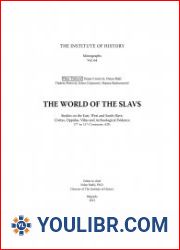
 49
49  1 TON
1 TON




